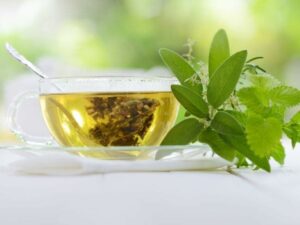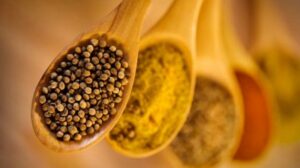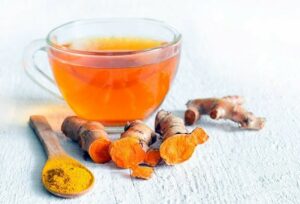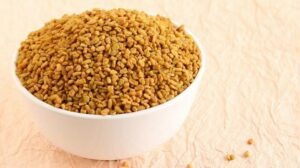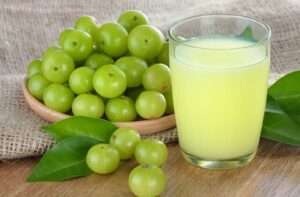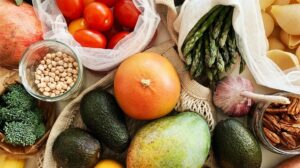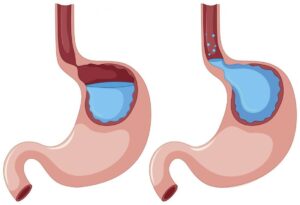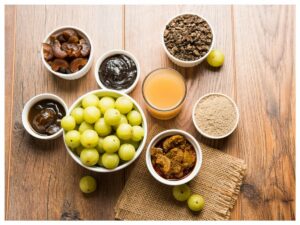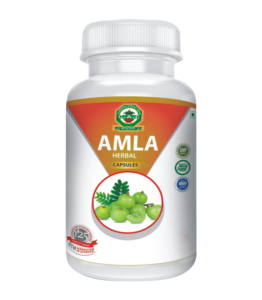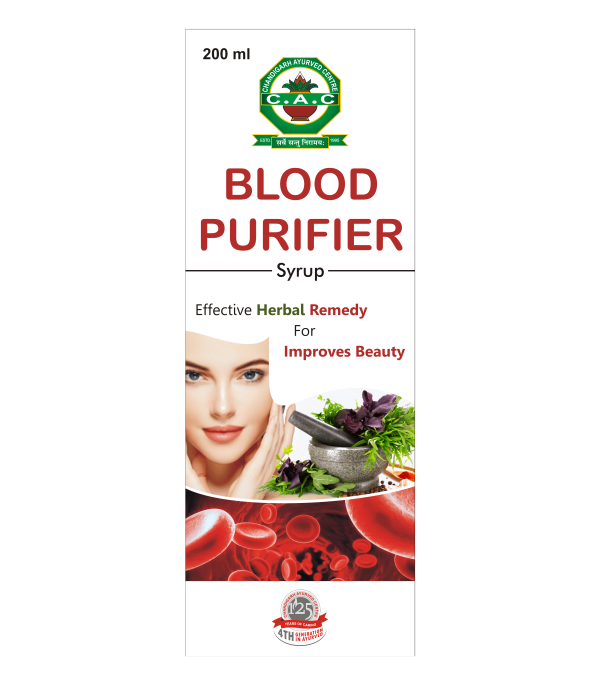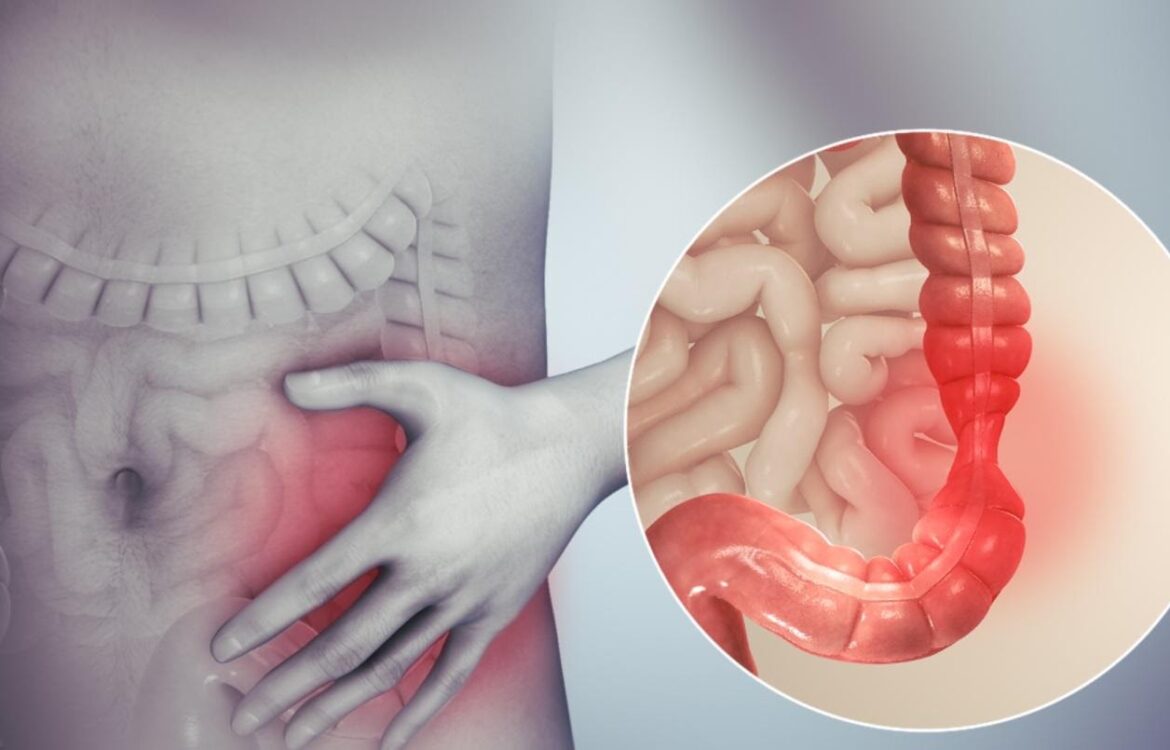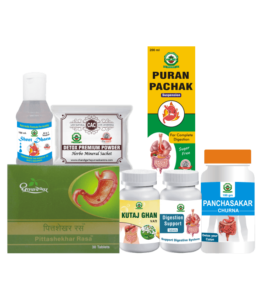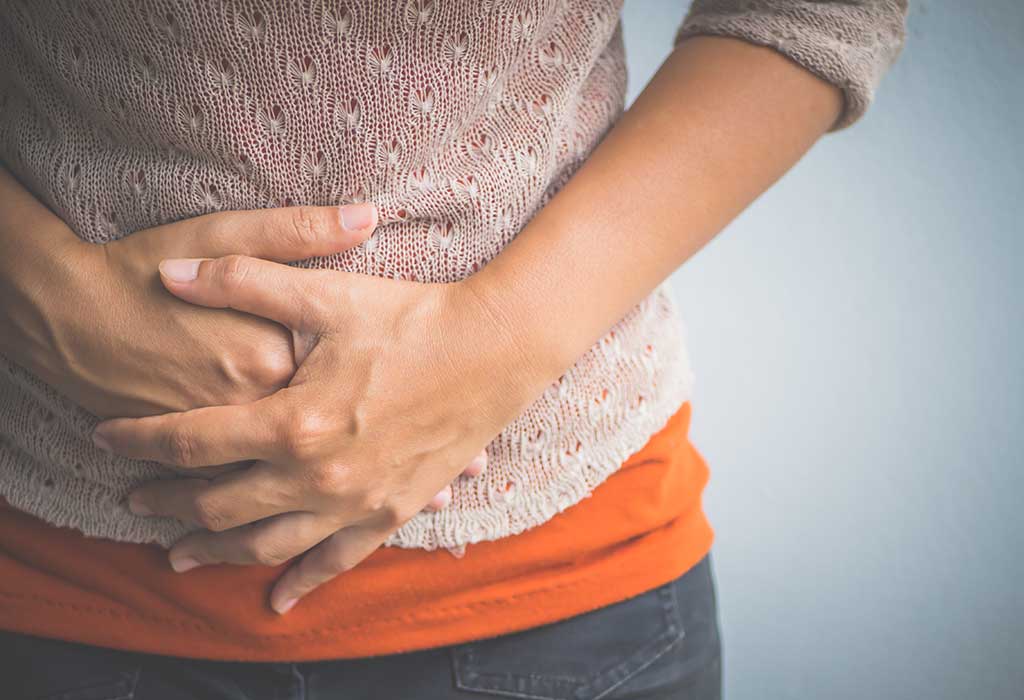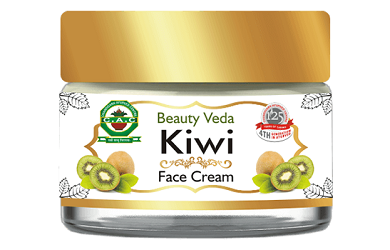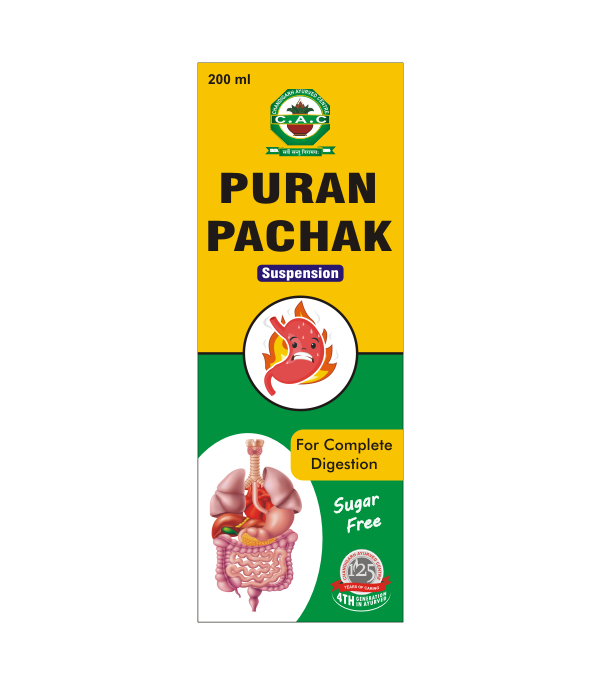Author Archives: Dr. Vaidya Karanvir Singh
Home Remedies For Triglycerides And Cholesterol?
- July 18, 2021
- Posted by Dr. Vaidya Karanvir Singh
- 0 Comment(s)
ABOUT CHOLESTEROL
Cholesterol is a wax-like substance produced in the liver and plays an important role in the normal functioning of the body. It keeps the walls of cells of the body flexible and needed for the creation of several hormones. but when cholesterol production is more than normal then it leads to health problems. High cholesterol levels can lead to many health-related issues like severe heart diseases, Hypertension, Respiratory disorders, and many more.
How does cholesterol affects your health ?
There are mainly two types of cholesterol – High density lipids and Low density lipids . High density lipids takes the cholesterol away from the blood vessels and prevents heart diseases. That’s why known as good cholesterol .On the other hand low density lipids results in cholesterol deposits in blood vessel walls . This leads to clogged arteries , strokes, heart attacks. So known as bad cholesterol.
While triglycerides ( a type of fat cells ) are an important energy supply for your body, having too many triglycerides in your blood can increase your risk for heart disease.
Daily diet plan helps in attaining and maintaining your health goals. High levels cholesterol and triglycerides can be prevented and effectively controlled by a combination of a good diet, exercise , ideal body weight and an overall healthy lifestyle.
Here are some home remedies that will help you to control your high cholesterol and triglyceride levels.
- Garlic
Garlic is commonly used from ancient times for its health enhancing properties . Garlic constitutes amino acids, vitamins, minerals, and many other compounds such as allicin, s-allylcysteine, s-ethylcysteine, and diallylsulfide. These componuds contains sulphur due to which garlic possess therapeutic properties . Garlic is very effective in reducing total and mainly LDL cholesterol.
How to take –
- Consume 1/2 to 1 garlic clove daily empty stomach in the morning . This will help to lower your cholesterol level by up to 9%.
- Add garlic in your daily meal
- Commonly used in Indian cooking, garlic has been known for its health enhancing properties
- Green Tea
Green tea is commonly and widely used liquid after water . Green tea is a rich source of polyphenols. Green tea has the highest concentration of polyphenols associated with not only lowering LDL Cholesterol but also increasing HDL Cholesterol.
Read Also: CAC CHOLESTEROL CARE TABLETS
3. Coriander Seeds
Dhaniya seeds have been used in Ayurveda for a number of health disorders . Coriander seed contains important vitamins like folic acid, vitamin A and beta-carotene, and vitamin C. All these helps to increase HDL and lower triglycerides levels .
How to use
- Take 1-2 tsp of Dhaniya seeds and add in 2 glass of water , reduce this to half glass and consume this .
- Add this into your daily diet.
- Honey
Honey is good source of vitamins and and helps us maintain cholesterol. Because of its antioxidants properties honey don’t let cholesterol move out of the blood and prevents the depositions of cholesterol to walls of blood vessels.
How to use
- Take 1 teaspoon honey and add in a cup of water. Also add add 8-10 drops of apple cider vinegar and one teaspoon lemon juice and drink it.
- Turmeric
Turmeric is effectively used to treat inflammation , infections and various gastrointestinal issues. Turmeric contains compound i.e. Curcumin due to which turmeric posses its medicinal properties. Turmeric cuts down deposited cholesterol on the walls of blood vessels and also prevents its further deposition.
How to use
- Take 1/2 tsp of turmeric , mix it in warm water and drink this solution after waking up in the morning.
- Add some turmeric in glass of milk and take this before sleeping this will reduce bad cholesterol.
- Add turmeric to your vegetables.
- Fenugreek seeds OR Methi seeds
Methi seeds good source of Vitamin E and possess anti inflammatory and antioxidant properties. Methi seeds also contain saponins that help to remove cholesterol from the body and also it lower it synthesis in the liver .
How to use
- Take 1/2 to 1 teaspoon of methi seeds daily is with luke warm water
- Take decoction of methi seeds or you can add this in your herbal tea.
- Amla
Amla is one of the richest sources of Vitamin C. In addition to minerals and amino acids phenolic compounds. The fruit of amla has been widely used from ancient times and is known as rasayana. Because of rejuvenating properties it not only helps in lowering cholesterol but also protect against CAD and atherosclerosis.
How to use
- One to Two amla should be consumed daily.
- Amla powder can be taken with Luke warm water.
- Amla juice can be taken 2-4 tsp empty stomach
Read Also: CHOLESTEROL-AYURVEDA DIET AND MANAGEMENT
- Flaxseeds
Flaxseeds are rich source of alpha-linolenic acid, an essential omega-3 fatty acids which are very beneficial to lower your LDL cholesterol and triglycerides levels.
How to use
- Add one tsp of powdered flaxseeds in a warm glass water and mix it properly and then drink immediately.
9.Choose diet that lowers cholesterol
- Wheat and barley are specifically mentioned in Ayurveda as grains that helps in natural fat reduction l. Oats , millets , old rice are other options to include in diet.
- Take high fibrous diet – vegetables like broccoli, carrots and banana stem, adequately spiced.
- Have fruits in moderation like apples, berries, pears, and limited quantities of nuts and seeds.
- Limit your sugar intake
Added sugar is commonly found in sweets, fruit juices , soft drinks . This has become a major part in our diet. Extra sugar in diet may be turned into triglycerides, which leads to an increase in blood triglyceride levels, along with other heart disease risk factors. Some changes in these kind of diet may give you good results in decreasing triglycerides levels. Always choose a low carb diet and replace this sugar sweetened beverages with green tea or herbal tea.
DIARRHOEA REMEDIES
- July 18, 2021
- Posted by Dr. Vaidya Karanvir Singh
- 0 Comment(s)
Introduction – Diarrhea occurs when passing loose or watery bowel movements three or more times in a day. In diarrhea, the lining of the intestine is unable to absorb fluid, or it actively secretes fluid. There are many causes of diarrhea including infection and inflammation in the stomach. Many cases of diarrhea are self-limiting and do not need specific treatment but drinking plenty of liquids in diarrhea to avoid dehydration.
Causes – Diarrhea have many different causes including the following:
- Infection – Infectious diarrhea is most commonly caused by viruses passed from person to person, or by eating, drinking food and water contaminated with viruses, bacteria such as Salmonella, or parasite such as Cryptosporidium.
- Change in diet – This can also be the cause of Diarrhoea.
- Lactose intolerance – Some people have diarrhea after eating foods containing fructose or artificial sweeteners such as sorbitol and mannitol.
- Drinking excess alcohol
- Bowel conditions– such as inflammatory bowel disease
- Malabsorption– due to problems with the pancreas).
- Surgery– when part of the bowel has been removed).
- Medicines– sometimes medicines cause diarrhea as a side effect as Antibiotics are a common example.
Symptoms
- Watery stools
- Upset stomach or cramps
- Nausea and vomiting
- Fever
- Dehydration
- Loss of appetite
- Salt and sugar – mix a teaspoon of salt and sugar in a cup of water and sip it as many is the best way to replenish the lost fluids.
- Probiotics – Probiotics are sources of good bacteria that work in the intestinal tract to create a healthy gut environment. They are essentially live microorganisms that exist in certain foods including aged soft cheeses, cottage cheese, dark chocolate, green olives, kimchi, miso, pickles, sourdough bread, and yogurt
- Fenugreek (methi) seeds – One teaspoon of fenugreek seeds should be swallowed without chewing with a cup of curds, buttermilk, or water for immediate relief from diarrhea.
- Mint (pudina) – Mix one teaspoon of mint leaves with lime juice and honey drink thrice daily for excellent results.
- Apples – A cooked or a stewed apple took every day is good medicine for diarrhea because it contains fiber. Fiber binds the stool together in diarrhea and helps control it.
- Garlic (lehsun): Garlic is another natural remedy that fights against diarrhea and helps to kill parasites. It is a powerful and effective antibiotic and aids digestion too.
- Banana – eat fruits like bananas and apples they are rich in potassium which helps to maintain the fluid balance in our body.
- White bread toast – white bread is low in fiber and thus helps to control diarrhea.
Foods to be avoided when you have Diarrhea
- Spicy and oily foods
- Sweets and chocolates
- Fermented foods like dhokla, idlis, dosas, cheese, etc.
- Uncooked fruits and vegetables
- Alcohol
- Pickles, canned and processed foods
- Milk
Tips to Avoid Diarrhea
- Always wash your hands twice a day with soap before eating anything.
- Eat fresh foods that have been well cooked.
- Avoid local drinking water in places where there is a high risk of diarrhea.
- Avoid consuming foods from food stalls on the street, because they are unhygienic.
- Avoid consuming chilled drinks.
How To Treat Acid Reflux Disease Naturally?
- July 18, 2021
- Posted by Dr. Vaidya Karanvir Singh
- 0 Comment(s)
You may have experienced acid reflux at some point in life. It is a common condition that features a burning pain or heartburn, in the lower chest area. It happens when stomach acid flows back up into the food pipe.
It occurs when the sphincter muscle at the lower end of your esophagus relaxes at the wrong time, this allows stomach acid to back up into your esophagus. This can cause heartburn and other signs and symptoms. The reflux on a regular basis can lead to gastroesophageal reflux disease (GERD).
It may occur in all age groups irrespective of gender.
Causes of Acid Reflux Disease
Some of the causes of Acid Reflux disease are listed below-
- Excessive eating or Overeating
- Lying down immediately after eating
- Eating particular food on a daily basis
- Increased pressure on the abdomen in case of overweight or obese or pregnant
- Intake of certain medications- Asthma medications, calcium channel blockers, antihistamines, sedatives, and antidepressants.
- Smoking or passive smoking.
Symptoms of acid reflux disease:
Some of the common symptoms associated with esophageal reflux disease are as follows-
- Nausea or vomiting
- Bad Breath
- Respiratory problems
- Pain in swallowing
- Difficulty in swallowing
- Decay
Natural Treatment of Acid reflux Disease:
- Avoid overeating- Larger meals can worsen symptoms of Acid reflux.
- One should maintain at least a 2hours gap between meals and sleep.
- Weight management- The pressure in your abdomen may become so high that the lower esophageal sphincter gets pushed upward, away from the diaphragm’s support because of your belly fat. Weight loss helps a lot in relieving the symptoms of Gastro Esophageal reflux disease.
- Follow a low carb diet- There can be Bacterial overgrowth because of undigested carbs and elevated pressure inside the abdomen may be noticed.
- Limit Alcohol intake- It may increase the severity of acid reflux and heartburn. Moderate intake of alcohol may also cause reflux in healthy individuals.
- Avoid intake of Caffeine- In some studies, it is seen that coffee can temporarily weaken the lower esophageal sphincter, which increases the risk of acid reflux.
- Avoid raw onion- Eating raw onion may irritate the lining of the esophagus, causing worsened heartburn, belching, and acid reflux in some people.
- Avoid too much citrus juices, limit carbonated beverages and eat less amount of chocolates.
- Elevate the head of your Bed- It may be helpful in decreasing reflux episodes and symptoms as compared to those who slept without any elevation.
- Sleep on the left side- Avoid sleeping on the right side because as you lay on your right side, stomach acid covers the lower esophageal sphincter. It increases the risk of acid leaking through it and causing acid reflux.
Acid reflux disease Treatment in Ayurveda
Treat the Esophageal reflux naturally with the means of some Herbal medications.
CAC SPECIAL MEDICATION FOR ESOPHAGEAL REFLUX DISEASE-
“Get treated Right now; don’t wait until it becomes worse”
| SR. NO. | PRODUCTS NAME | DOSAGE |
| 1. | Agnimukha Churna | *1/2Teaspoon two time a day |
| 2. | Puran Pachak | *2teaspoon two times a day |
| 3. | Sheet Dhara | *1/2 or 1 teaspoon twice daily, empty stomach. |
| 4. | Panchasakar Churna | *1teaspoonful at bed time with warm water. |
| 5. | Liver Care Tablet | *1tablet twice daily |
| 6. | Pitta Balance Tablets | *1tablet twice daily |
*The dosage of the above medications may differ from person to person as per the severity of the patient.
DETAILED DESCRIPTION OF THE PRODUCTS-
- Agnimukha Churna
This herbal churna is prepared from ingredients like Vacha (Acorus calamus), Pippali (Piper longum), Sonth (Zingiber officinale), Ajwain (Trachyspermum ammi), Haritaki (Terminalia chebula), etc that balances vata & kapha doshas in the body. It gives effective results in indigestion, anorexia, abdominal pain, constipation, loss of appetite, flatulence, bloating, intestinal gas, intestinal gas, etc.
Recommended Dosage: Take a half teaspoon of this churna twice daily with normal water.
- Puran Pachak
Puran Pachak is a herbo-mineral Syrup of 200 ml and is Purely Ayurvedic formulation. CAC Puran Pachak syrup helps in Digestion, Supports the Digestive system, and Maintains the doshas in our body. It also helps to remove out impurities or ama from the body. This syrup reduces the Acidity, Detoxify the blood and also Supports the body health. It shows Antacid, Digestive, Anti-inflammatory, Analgesic, Expectorant, and Antioxidant properties. This syrup is made up of pure ayurvedic herbs such as Mulethi, Saunf, Vasakha, Ajwayan, Prpati etc. that helps to maintain the Digestive system and in the body.
Recommended Dosage: Take 2 teaspoonful twice daily.
- Panchsakar Churna
This churna is very effective for acidity patients as it shows antioxidant, anti-inflammatory, laxative, & analgesic properties. It is a classical herbal churna prepared from ingredients like Shatapushpa,Balaharitaki, Shunthi, Swarnapatri, & Saindhav lavana. It helps in removing all toxins
from the body & provides good results in acidity. All signs & symptoms related to acidity are treated with the regular use of this churna.
Recommended Dosage: Take 1 teaspoonful at bedtime with warm water.
- Sheet Dhara Syrup
This herbal syrup is prepared from ingredients such as ajwain satav, mushak kapoor, peppermint, etc that naturally relieve the symptoms like bloating, blenching, nausea, vomiting, feeling of discomfort, etc. The regular use of this herbal syrup neutralizes the high acid content, reduces
abdominal pain, & cramps.
Recommended dosage: Take half teaspoonful of this syrup in half a cup of water. Drink this mixture twice daily on an empty stomach.
- Liver Care Tablet
These tablets are 100% safe and purely ayurvedic formulation. It maintains the proper functioning of the liver and stimulates the growth of new liver cells. Liver Care Tablets contains Ingredients like Kalmegh (Andrographis paniculata), Kutaki(Picrorhiza kurroa), Bhumi amla( phyllanthus niruri), Giloy(Tinopora Cordifolia), Yavakshar( Hordeum vulgare), Imli Kshar( Tamarindus indica), Mukta Shukta pisti etc. These herbs balances excess Pitta Dosha and helps in problems like abdominal bloating,flatulence, abdominal pain, loss of appetite and indigestion.
Recommended Dosage: Take 1 tablet twice daily with normal water.
- Pitta Balance Tablet
Pitta doshas is responsible for digestion, metabolism, blood quality, thirst, appetite, eyesight, skin color and quality, body temperature, and mental abilities of intelligence and courage. Pitta doshas is composed of a fire element that digests almost everything that a person eats or drink. The eaten food is transformed into energy for the body to use in various functions of the body.
Recommended Dosage: Take 1 tablet twice daily with normal water.
Top 10 Uses and Health Benefits of Amla Capsules
- July 18, 2021
- Posted by Dr. Vaidya Karanvir Singh
- 0 Comment(s)
Amla or Indian gooseberry is an ancient Ayurvedic herb that has been used in Ayurveda for thousands of years. In Sanskrit, it is known as Amalaki. Amalaki is known as Vaya sthapani due to its rejuvenating properties. Dhatri is also one of the synonyms of Amalaki which means one who cares like a mother
Amla or Indian Gooseberry is a great source of vitamin C, which acts as an immunity booster. It also contains many other essential minerals and amino acids along with other vital nutrients. Amla is very beneficial in health issues like cough, cold. sore throat, flu, etc. Amla has cooling and laxative properties which help in stomach-related disorders like acidity, burning sensation, pain abdomen, ulcers, etc. Also very effective to strengthen the digestive system.
Effect over tridosha
Amla contains all tastes except Lavan and is cool in potency. Amla pacifies Vata, pitta, and Kapha, mainly helpful to calming to pitta. In addition, amla rejuvenates all of the tissues in the body and builds Oja i.e. the essence of immunity and youthfulness. In general, amla is powerful for many systems of the body. It is known to promote energy, reproductive health, and healthy cholesterol levels.
Benefits of Amla
- Supports healthy metabolism, digestion, and eliminates toxins out of the body.
- Promotes anti-inflammatory properties that cool, tone, and nourish tissues and organs
- Strengthens the heart and respiratory system
- Assists natural internal cleansing and maintains regularity
- Acts as a natural antioxidant
- Beneficial for the healthy maintenance of eyes, hairs, skin, etc.
- Balances Agni (digestive fire)
- Very effective in reducing hyperacidity
- Builds ojas to support a healthy immune response and youthfulness
How to use amla
Amla can be taken in Four forms – Chew raw fruit of amla, in powder form, capsule or tablet form, or in the form of liquid extract.
Chandigarh Ayurveda center provides a nice alternative for those who find the taste The tablets also provide a nice alternative for those who find the taste a deterrent to taking the herb.
CAC’s Amla capsules can be considered as the capsuled versions of Amla, the king of whole foods. The Amla Capsules ensure you get all the benefits while being especially easy for you to store the superfood. Packed with high Amla nutritional value, CAC’s Amla capsules also help you relieve yourself off of cough, cold, and flu.
Main herbs and properties
CAC Amla capsules are made up of Emblica Officinalis, which mainly consists of Amla powder and amla extracts. So you can consume the supplement for natural Amla properties to give your body the Amla nutrition that a body needs.
Benefits of amla capsules
- Amla capsule for rejuvenation
Amla is considered as Rasayana for the entire system. Specifically, It promotes youthfulness, boosts immunity, provides nutrition to all body tissues so promotes overall health. Amla also acts as a brain tonic to increase memory, balance emotions.
2. Amla capsules for detoxification
As Amla is a great anti-oxidant, so directly promotes detoxification of the body. As the detoxification of the body lies on the healthy digestion, Circulation, Elimination that are very well maintained by amla. Amla also has a particular affinity for the blood, the liver, and the spleen, and is, therefore, able to support the elimination of natural toxins while nourishing and protecting the body’s natural defense systems.
3.Amla Capsule in Digestion
Amla improves appetite and increases the digestive fire that is main for proper digestion to occur. As Pitta dosha and Agni are interrelated and the health of digestive fire suffers when pitta is aggravated. Amla is very effective in clearing pitta from the digestive tract, flushes extra hot out of the bowel thus support digestion.
4.Amla Capsules in chronic Ailments
There are many medicinal properties in Amla. Chronic health conditions like High cholesterol, Diabetes, Heart diseases that are impacting a large number of people, can be managed by consuming Amla.
5.Amla Capsules against infections
As Amla is a wonderful source of Vitamin C so very helpful for improving your immunity, amla capsules are effective for the body against viral and bacterial infections as well as while fighting from the common cold.
6.Amla Capsules in Weight management
Amla benefits people who are struggling to manage their weight as it aids digestion and improves metabolism. Daily intake of amla will help your weight management.
7.Amla capsule for eyesight
Amla contains carotene that is helpful in increasing and improving vision. Adding amla as a supplement in your daily routine will help you to maintain eye health.
8. Amla capsule as a blood purifier
As Indian gooseberry is the main source of Vitamin C so it helps in making the blood vessels stronger and thicker. Amla acts as an antioxidant agent so helps in the detoxification of the body.
9. Amla capsules for healthy skin
Amla is an excellent supplement for your skin and hair. As Amla possesses anti-aging properties so it not only provides a natural glow to the skin but it also helps to keep skin hydrated and healthy.
10. Amla capsules for healthy hairs
Amla is a proven tonic for hair as it cures dandruff, prevents hair loss, slows down graying of hair, strengthens the hair follicles, and increases blood circulation to the scalp.
So there are numerous uses of Amla capsules. To get the benefit of this phenomenal herb buys Amla capsules without any delay add them as a supplement to your daily routine. You can Buy CAC’s Amla Capsules online also from Flip kart, snap deal, Amazon, Shop healthy, Mayo upchar.
Contact us on number 97800-00837.
How To Avoid Irritable Bowel Syndrome With Constipation?
- July 18, 2021
- Posted by Dr. Vaidya Karanvir Singh
- 0 Comment(s)
WHAT IS IBS-C?
- In the Modern era of fast food, there is change or irregularity in diet and diet timings and also sedentary lifestyle.
- In addition to changes in diet and lifestyle, one is always under tremendous mental stress.
- All these cause disturbances to the digestive system, which results in many diseases.
- Irritable bowel syndrome with constipation is a chronic gastrointestinal disorder that causes frequent bloating, abdominal pain, and infrequent stools that are hard to pass.
- IBS-C is not life-threatening but can be extremely uncomfortable and interfere with your day-to-day activities.
- It can affect the person of all age groups but it most often develops in young adults. Women are affected more often than men.
SIGN AND SYMPTOMS OF IBS-C:-
- excessive gas formation
- Painful bloating
- feelings of block in stomach
- weight loss
- infrequent bowel movements (three or less per week)
- changes in the appearance of bowel movement
- more hard or lumpy stool
- Changes in bowel habits.
- Inability to empty the bowel
- Indigestion
- Nausea
- Loss of Appetite
- Stool with Mucus
- Blood in the stool may be appearing red or very dark or black tarry like consistency
AYURVEDIC TREATMENT OF IRRITABLE BOWEL SYNDROME-
According to Ayurveda science, IBS-C is known as ‘Grahani Roga’. In this disorder, there is a disturbance in the functions of the intestines and bowels.
Ayurvedic Treatment of Irritable bowel syndrome with constipation comprises pure herbal formulation and also some changes in the diet and lifestyle.
HERBAL FORMULATIONS BY CAC-
- DETOX PREMIUM POWDER-
Ingredients-
- Shankh bhasma
- Sutshekhar ras
- Parwal pishti
- Shukta pishti
- Giloy
- Kamdudha ras
- Shwet parpati
Recommended Dosage: Take one sachet twice daily with normal water.
- PITTASHEKHAR RASA-
Ingredients-
- Sootshekhar rasa
- Bilva majja
- Kalmegha
- Shankha bhasma
- Kapardika bhasma etc.
Recommended Dosage: Take 1 tablet twice a day with plain water
- PURAN PACHAK SYRUP-
Ingredients-
- Mulethi
- Saunf
- Vasakha
- Ajwayan
- Parpati etc.
Recommended Dosage: Take 2 teaspoonfuls twice a day.
- PANCHSAKAR CHURNA:
Ingredients-
- Saindhavan Lavana (Rock Salt)
- Swarnapatri (Cassia angustifolia)
- Shatapushpa (Anethum sowa)
- Shunti (Zingiber officinale)
- Balaharitaki (Terminalia chebula)
Recommended Dosage: Take ½ tsp. of panchsakar choorna twice a day with plain water.
- KUTAJ GHAN VATI-
Ingredients-
- Kutaj (Holarrhena antidysenterica)
- Ativisha (Aconitum heterophyllum)
Recommended Dosage: Take 2 tablets twice daily before meal with normal water.
- SHEET DHARA SYRUP
Ingredients-
- Ajwain Satava
- Mushak Kapoor
- Peppermint, etc
Recommended dosage: Take one teaspoonful of this syrup in ½ a cup of water. Drink this mixture twice a day on an empty stomach.
- DIGESTION CARE TABLET
Ingredients-
This tablet is a unique blend of the best digestive herbs like
- Kutaz chal
- Bilva
- Dhania
- Mustak
- Shankh bhasm
- Piper mint
- Dadima
Recommended Dosage: Take one tablet twice a day.
5 best Ayurvedic herbs to relieve IBS-
- Chamomile
- Aloe vera
- Ginger
- Fennel seeds
- turmeric
PRACTICE YOGA-
Some yoga positions are more helpful for eliminating the symptoms of irritable bowel syndrome. The recommended poses include-
- Corpse position
- Sun salutations
DIET PLAN FOR IBS-
- Consume plenty of fruit and vegetables.
- Consume plenty of fluid – such as water or herbal teas.
- Have a regular meal pattern
- Reduce caffeine
- Take time when eating meals.
- Don’t skip meals.
- Limit alcohol and fizzy drinks
- Sit down to eat; chew food well.
- Reduce intake of resistant starches
- Plenty of starchy carbohydrates. Examples include bread, rice, cereals, pasta, potatoes, chapattis, and plantain.
- Avoid processed foods like crisps, oven chips, supermarket pizza, biscuits and cakes, breakfast cereals.
Read Also: How to Treat Constipation in Ayurveda with Herbal Remedies?
AYURVEDIC TREATMENT OF CONSTIPATION-
TRIPHALA IS YOUR GO-TO REMEDY
- Triphala is One of the most effective and trusted Ayurvedic laxatives, a medicinal blend of dried fruits from the plants Amalaki (Emblica Officinalis), Bibhitaki (Terminalia bellerica), and Haritaki (Terminalia chebula).
- Triphala is an effective treatment for diabetes, constipation, and obesity.
- Triphala is available in a powdered form, tablet or liquid extract, etc.
- You can make a Triphala tea by adding 1/4 of a teaspoon of Triphala, ¼ teaspoon of cardamom seeds, and 1/2 teaspoon of coriander seeds.
- Cardamom and coriander seeds help relieve flatulence and indigestion.
BASTI-
- One of the treatments, Panchakarma Basti, is cleansing the bowel through the use of medicated enemas (Basti).
ABHYANGA-
- According to the ayurvedic perspective, abdominal massage and deeper colon massage therapies can help relieve constipation effectively.
- Abdominal massage reduces constipation and improved people’s overall quality of life.
PRACTICE YOGA-
Some yoga positions are more helpful for move the bowel and relieve constipation.
The recommended poses are-
- Bhujanghasana (Cobra)
- Trikonasana (Triangle Stretch)
- Ardha matsyendrasana (Half Spine Twist)
- Supta vajrasana (Sleeping Pelvis)
- Vajrasana (Diamond)
- Dhanurasana (Bow)
- Sarvangasana (Shoulder Stand)
- Mayurasana (Peacock)
- Pavan muktasana (Wind Release)
- Naukasana (Boat)
- Halasana (Plow)
- Shalabhasana (Locust)
- Mandukasana (Frog)
- Paschimottanasana (Head to Knee)
- Katichakrasana (Standing Spine Twist)
DIET PLAN–
- Avoid dehydration
- Follow A Vata Dosha Pacifying Diet
- Increase consumption of fruits and vegetables.
- Take a fiber-rich diet every day
- Taking one teaspoon of ghee in a cup of warm milk at bedtime is an effective remedy for relieving constipation.
BLOOD PURIFIER
- July 15, 2021
- Posted by Dr. Vaidya Karanvir Singh
- 0 Comment(s)
Description
CAC Blood Purifier Syrup is 100% natural & safe prepared from various extracts of herbs. The herbs used for formulation of this syrup shows antioxidant, anti-inflammatory, anti-bacterial, anti-fungal, and immune-modulator properties. It is best known for purifying the blood. It helps in eliminating the toxins from blood that cause acne and blemishes. It’s a perfect herbal remedy for skin diseases like acne vulgaris, boils, skin rashes, blemishes, urticaria, and nose bleeding.
Ingredients of Blood Purifier Syrup:
Each 10 ml contains extract of:
- Chirayita (Swertia chirayita) ——————– 200 mg
- Khadir chall (Acacia catechu) ——————- 200 mg
- Majith (Rubia cordifolia) ———————- 100 mg
- Chopchini (smilax glabra) ———————– 100 mg
- Neem chall (Azadirachta cordifolia) ———– 200 mg
- Patol leaves (Trichosanthes dioica) ———— 150 mg
- Giloy (Tinospora cordifolia) ——————– 100 mg
- Via vidang (Embelia ribes) ——————— 100 mg
- Chandan (Santalum album) ——————– 100mg
- Bakuchi seeds (Psoralea corylifolia) ———- 100 mg
- Harar (Terminalia bellerica) ——————– 100 mg
- Bahera (Terminalia chebula) ——————– 100 mg
- Aamla (Emblica officinalis) ——————— 100 mg
- Haridra (Curcuma longa) ———————- 100 mg
Uses of Blood Purifier Syrup:
- Purifies blood
- Improves digestion
- Cures acne
- Beautifies skin
- Acne
- Blemishes
- Eczema
- Psoriasis
- Atopic dermatitis
- skin disorders
Ingredients description :
- Chirayita (swertia chirayita) – The external application of Chirata paste might help in managing skin diseases such as eczema and pimples due to its antibacterial and anti-inflammatory properties. It reduces the bacterial action on the body as well as reduces inflammation, pain, and redness associated with acne and pimples.
- Khadir chall (acacia catechu) – Khadir has antibacterial and antifungal properties due to which it inhibits the growth of bacteria and fungi that cause skin problems. So it may be useful in various skin diseases. Khadir helps to control the symptoms of skin disease like eczema when applied on the affected area.
- Majith (rubia cordifolia) – Manjistha or Indian Madder is considered to be one of the best blood-purifying herbs. It is mainly used to break down blockages in the blood flow and remove stagnant blood. Manjistha herb can be used both internally and externally on skin for promoting skin whitening. It helps in manage acne and pimples by inhibiting the growth of acne-causing bacteria due to its antioxidant property.
- Chopchini (smilax glabra) – Chopchini is useful in skin problems. It manages skin inflammation and allergic reactions by inhibiting the histamine release due to its anti-allergic property. Applying Chopchini cream on the skin helps to manage psoriasis by inhibiting the growth of microorganisms due to its antipsoriatic property.
- Neem chall (Azadirachta indica) – Neem has anti-ageing properties. It is known to reduce wrinkles and fine lines and keeping the hydration levels up. Neem treats acne. Neem has antibacterial properties that fight any kind of breakouts and also soothes itchy and irritated skin. It helps to improve skin tone, reduces dark spots, pigmentation, blemishes and any kind of redness on your skin. Consumed neem juice for skin that it purifies the blood hence increases circulation, fewer pimples and acne and helps in glowing skin.
- Patol patra (trichosanthes dioica) – Patol patra is one such vegetable which according to Ayurveda is an efficient blood purifier. It is light and dry in quality, bitter in taste, ushna or hot in potency, pungent after digestion and it balances Kapha and Pitta. It helps in regulating the excess buildup of Kapha, cleaning our blood and tissues and removing impurities from our body. patol patra deal with a number of skin issues. It consists of a good amount of antioxidants, Vitamin A and Vitamin C, Vitamin B1, Vitamin B2, Copper, Iron, Magnesium, Sulphur, Iodine, Fluorine, Chlorine, Phosphorus, Fiber.
- Giloya (Tinospora cordifolia) – Giloy helps to remove toxins from the body, purifies blood, fights bacteria that causes disease. It contains anti-aging properties that help reduce dark spots, pimples, fine lines and wrinkles and gives flawless, glowing skin.
- Aamla (Emblica officinalis) – Amla is loaded with skin-friendly Vitamin C. Amla purifies blood and fights toxins which help you get a beautiful and radiant skin. The rich antioxidants of amla also help delay the effects of premature aging such as fine lines, wrinkles, dark spots and give young and supple skin. Consuming amla regularly also help to keep dead skin cells, acne and occurrence of pimples away from skin.
WHAT IS IBS-C AND HOW TO TREAT IT?
- July 15, 2021
- Posted by Dr. Vaidya Karanvir Singh
- 0 Comment(s)
- IBS-C or Irritable bowel syndrome with constipation is a chronic gastrointestinal disorder that causes frequent bloating, abdominal pain, and infrequent stools that are hard to pass.
- IBS-C is not life threatening but can be extremely uncomfortable and interfere with your day-to-day activities.
- Unfortunately in modern science there’s no cure, so treatment is done symptomatically.
- It can affect the person of all age group but it most often develops in young adults. Women are affected more often than the men.
- Ayurvedic Treatment of Irritable bowel syndrome comprises of pure herbal formulation and also along with some changes in the diet and lifestyle.
SIGN AND SYMPTOMS-
- Painful bloating
- Excessive gas
- Feelings of a rock or block in your stomach
- Infrequent bowel movements (three or less per week)
- Stools that are more hard or lumpy
- Feeling to incomplete evacuation.
- Your bloating and pain may go away temporarily, once you do have a bowel movement.
- Feeling of tiredness
Causes of IBS-C
The exact cause of IBS-C is unknown. Some possible causes are-
- Genetic- If you have a family history with IBS then chances of getting this problem is high.
- Certain bacterial infection, as IBS carries underlying inflammation in the GI tract.
- Psychological or brain-gut relationship may be altered as a result of which brain isn’t providing the right signals to regulate intestinal movements.
- Irregular eating habits
- Suppression of natural urges
- Stress and Anxiety
- Excessive eating or eating of Processed or junk food items, packaged food etc.
AYURVEDA VIEW ON IBS-C
According to Ayurveda perspective, IBS-C is described as ‘Grahani Roga’. In this disease there is disturbance in the functions of the bowels and intestines.
Grahani or duodenum is the seat of Agni or digestive fire and here food undergoes digestion process. After the digestion of food is complete, then it passes to the next part of the digestive tract for absorption, but if there is Manda Agni or weak digestive fire, then the food is not completely digested and passes in undigested form. This undigested food particles are termed as Ama or the toxins.
These Aama or toxins will further combine with normal food leading to foul smelling stools.
These toxins are the main reason behind IBS-C. If it is not treated then it may give rise to other diseases.
Treatment of irritable bowel syndrome with constipation
IBS CARE KIT
Pittashekhar Rasa-
Ingredients-
- Sootshekhar rasa
- Bilva majja
- Kalmegha
- Shankha bhasma
- Kapardika bhasma etc.
Benefits-
- It helps to balances pitta dosha in the body.
- Regular use of these tablets helps to improve digestion
- Enhances appetite
- Carminative
- Reduces acidity
- Prevents gastric ulcers
- Reduces heartburn
- Acts as a laxative
- Reduces pain in the abdomen, etc.
Recommended Dosage: Take 1 tablet twice daily with normal water.
Detox Standard Powder-
INGREDIENTS-
- Shankh bhasma
- Sutshekhar ras
- Parwal pishti
- Shukta pishti
- Giloy
- Kamdudha ras
- Shwet parpati
BENEFITS-
- It gives calming effect on the stomach.
- These sachets have anti-inflammatory, antioxidant, and antacid like properties.
- It mainly affects in lowering the pitta dosha of the body and maintains proper digestion of the body.
Recommended Dosage: Take one sachet twice daily with normal water.
Puran Pachak
INGREDIENTS-
- Mulethi
- Saunf
- Vasakha
- Ajwayan
- Parpati etc.
BENEFITS-
- It helps to maintain the Digestive system and in the body.
- This syrup helps in Digestion, Supports the Digestive system and maintains the doshas in our body.
- It also helps to remove out impurities or ama from the body.
- It helps to reduce the Acidity, Detoxify the blood and also supports the body health.
- It shows Antacid, Digestive, Anti-inflammatory, Analgesic, Expectorant, and Antioxidant properties.
Recommended Dosage: Take 2 teaspoonful twice daily.
Panchsakar Churna:
INGREDIENTS-
- Saindhavan Lavana (Rock Salt)
- Swarnapatri (Cassia angustifolia)
- Shatapushpa (Anethum sowa)
- Shunti (Zingiber officinale)
- Balaharitaki (Terminalia chebula).
BENEFITS-
- The above combination deal with problems like loss of appetite, abdominal pain, bloating, flatulence, constipation, weak digestion, etc.
- It is best used for Ayurvedic treatment of Constipation.
Recommended Dosage: Take a half teaspoon of this churna twice daily with normal water.
Kutaj Ghan Vati
INGREDIENTS-
Kutaj (Holarrhena antidysenterica)
Ativisha (Aconitum heterophyllum)
BENEFITS-
- Kutaj Ghan vati is purely herbal formulation. It is very useful in curing diarrhea, intestinal infection, and dysentery.
- These herbal tablets deal with all signs & symptoms related to diarrhea patients.
- It manages the symptoms like abdominal pain, abdominal cramps, nausea, vomiting, loose stools, general weakness, fatigue, etc.
- The herbs in these tablets show antioxidant, anti-diarrheal, anti-inflammatory, etc properties.
Recommended Dosage: Take two tablets twice a day before meal with water.
Sheet Dhara Syrup
INGREDIENTS-
- Ajwain satava
- Mushak kapoor
- Peppermint, etc
BENEFITS-
- It naturally relieves the symptoms like bloating, blenching, nausea, vomiting, feeling of discomfort, etc.
- The regular use of this herbal syrup neutralizes the high acid content, reduces abdominal pain & cramps.
Recommended dosage: Take half teaspoonful of this syrup in half a cup of water. Drink this mixture twice daily on an empty stomach.
Digestion care tablet
INGREDIENTS-
This tablet is unique blend of best digestive herbs like
- Kutaz chal
- Bilva
- Dhania
- Mustak
- Shankh bhasm
- Piper mint
- Dadima
BENEFITS-
- It helps to balance the natural Ph. level in the stomach.
- Aids digestion of all types of food.
- The herbs present in this control acidity, gas, flatulence, and constipation. These complex problems are the root cause of all diseases.
- If the digestive system is proper it leads to proper assimilation of the nutrients in the body.
- As per Ayurveda digestive disorders are due to the imbalance of Pitta doshas. Ama formation leads to digestive disorders.
Dosage: Take 1 tablet twice daily with plain water
10 Effective Ways to Improve Your Digestion
- July 15, 2021
- Posted by Dr. Vaidya Karanvir Singh
- 0 Comment(s)
In Ayurveda, Agni is the digestive fire inside our bodies which decides the condition of our wellbeing. Our Agni is situated inside the lower stomach and small digestive tract which contains acids and enzymes.The idea of Agni is firmly identified with the absorption of food, which essentially alludes to the capacity of your body to utilize supplements and food into energy that supports life.
Our Agni is solid when we have sound absorption. A sound stomach related framework prompts even Agni, which thusly assists with supporting in general prosperity.
Chew your food
Chewing well is a basic but broadly neglected practice! Chew completely to help food digest (food ought to be fluid before you swallow) Saliva contains compounds you need to start separating the nourishment for assimilation and you would prefer not to race through this cycle. Our stomach doesn’t have teeth. To appropriately process our food, we need to do a ton of work in the mouth. At the point when we eat on the run or swallow down our food, assimilation gets compromised. Moderate down, enjoy your food and chew it well.
Improve the appetite
To improve the hunger, have a cut of new ginger root spiked with some stone salt and new lemon juice about an hour prior to a dinner. Bite fennel seeds after a feast to upgrade processing and refresh the breath normally.
For healthy digestion
As soon as get up, drink some heated water to which a tablespoon of lemon juice has been added. This will help end, get the stomach related juices streaming, and purify out the stomach related plot. Juiced drinks are not suggested in ayurveda.
Fasting
Giving the body a rest from assimilation is once in a while suggested. Noticing a heated water quick for a day can bring alleviation and can reset the body’s stomach related fire. Add a touch of dark pepper and ginger for a more successful stomach related guide.
Drink Ginger tea
It’s useful for banishing bloating, and ginger tea is likewise stunning after a heavier feast, Carlson says, since it “assists with consuming the laziness and power brought about by rich food.” Just don’t drink excessively, as ginger can be “excessively searing” for anybody with corrosive heartburn, she says. Attempt gradually tasting a feebly fermented form just after you eat.
Water intake
Water is imperative for absorption and for the body. It forestalls stoppage and other processing related issues. You should have basically 1.5 to 2 liters of water each day. Keep up your liquid admission with different choices like soups, new squeezes, coconut water, natural teas, and so forth Avoid circulated air through and charged beverages as they are over-burden with sugar content.
Sit on knees afterb eating (Vajrasna)
Sacrosanct eating additionally implies not promptly going around after a dinner. Yoga is the sister study of Ayurveda, and Vajrasana, or thunderclap present, can be exceptionally helpful subsequent to eating: Kneel down onto a delicate surface, sitting on your knees with your heels and toes contacting, preferably.
When you sit in Vajrasana, it helps enormously to just sit upright and close your eyes for a couple of moments in the wake of eating. Imagine your food getting processed into sustenance that will invigorate you, energy and essentialness.
Wait to eat until previous meal is digested
It’s enticing to nibble continually, particularly with our occupied in a hurry ways of life. It might even be an oblivious propensity. The risk is that the stomach related framework doesn’t get satisfactory chance to deal with that we’ve quite recently eaten, which turns into an obligation to our body and prompts various intestinal aggravations.
At the point when your food has been appropriately processed you will encounter sensations like actual delicacy, excitement, certified yearning and general solace in the body. Just once you get signals like these should you continue to eat more.
Eat warm foods and Drink the warm liquids
Numerous individuals have seen how their processing starts to promptly further develop when they change from cold to warm water and from crude food to warm dinners. Why? The stomach related framework is considered as a fire in Ayurveda. Like any fire, the stomach related framework likewise gets “smothered” when we throw cold substances into it. The stomach related framework is lighted by warm food sources and refreshments.
Try not to Overeat
At the point when we eat more food than our stomach can oblige, we can’t as expected separate it. We likewise will in general create more corrosive, hence causing reflux and heartburn. Likewise, the measure of stomach related proteins delivered will be unable to totally separate the volume of food ingested, which prompts more gas arrangement, distress, or swelling. Ayurveda prescribes that we leave 33% to one-fourth of our stomach void to permit space for our body to effectively process our feast.
KIWI FACE CREAM
- July 15, 2021
- Posted by Dr. Vaidya Karanvir Singh
- 0 Comment(s)
ABOUT KIWI
- Fruits are good for your health and skin.
- Kiwi is the richest source of vitamin C and vitamin C is one of the richest sources of antioxidants that fight with free radicals and stop these toxins to damaging skin.
- Vitamin C, when applied on skin, has natural astringent properties that brighten skin tone.
- Kiwi is also loaded with Vitamin E.
- Kiwis contain powerful phytonutrients that protect DNA from damage.
- When eaten or applying, the kiwi fruit protects cells from oxidative stress which can easily cause to develop dark patches and age spots.
- Kiwis are collagen stimulating.
- It has combined powers of Vitamin C, Vitamin E and phytonutrients that make kiwi able to fight the signs of skin aging by affecting collagen production.
- kiwis has the ability to heal, treat and correct damages to skin, including cuts, bruises, wrinkles, dark spots, saggy skin, and other visible signs of skin aging.
- Kiwis also have natural antibacterial and antimicrobial properties. This function is essential for any skin type, but most of all for acne-prone skin.
- Kiwi promotes healthy blood and oxygen circulation. The nutrients in kiwifruit improves blood vessel health and keep these from busting and leaking fluids.
- Kiwi contains potassium. It keeps your skin healthy and protected from dryness. When skin become dry, it easily get damaged, and cause skin to darken.
USES
promotes cell regeneration,
appearance of youthful skin,
controls oil.
INGRIDENTS
- Fruit plant extract
- Honey
- Lemon juice
- Jojoba oil
- Argan oil
- Wheat gram oil
INGRIDENTS DESCRIPTION
- Honey – Honey has antibacterial and anti-inflammatory properties. These properties play an important role in removing excess oil from the skin and clearing clogged pores and preventing the cause of breakouts like pimples, acne, blackheads and whiteheads.
Honey has natural moisturizing properties and therefore it is a great ingredient to be added in skincare products. Once applied to the skin, it helps in softening the skin’s upper layers and deeply penetrating the skin to offer hydration to underlying skin layers. Honey has skin brightening properties and also lends a healthy moisturized glow to the face after usage. Honey is good to treat dry skin but also works extremely well in treating oily, acne-prone and combination skin types.
- Lemon – Lemons play an important part in our beauty routines they have so many natural benefits. They are wonderful source of calcium, vitamin C, magnesium and potassium, all these helps to improve the appearance and condition of our skin, hair, and nails. The juice of a lemon is a natural alkalizing agent, and helps to maintain a steady pH balance in the body. Lemons provide a dose of the free radical fighting antioxidant vitamin C, which helps to keep skin even-toned and helps boost the body’s immune system. Lemon can be used as a skin astringent as it helps pores to close and provide strength to tighten the face skin resulting smoother skin.
- Jojoba oil – This oil contain moisturizing property. This means that it works to seal skin with a protective barrier to keep it from losing moisture. This may help to prevent bacterial infections and acne. Jojoba oil contains antimicrobial and antifungal properties. Jojoba oil contains natural forms of vitamin E. This vitamin works as an antioxidant agent and help skin to fight oxidative stress caused by everyday exposure to pollutants and other toxins.
- Argan oil – Boosts elasticity.
- Hydrates skin to prevent dry and flaky skin.
- Prevents and reduces stretch marks – the skin regeneration and repair qualities of argan oil help to reduce inflammation and minimise stretch marks.
- Prevents and minimize sun spots – argan oil contains a physical filter against UV light which therefore helps to prevent sun damage, and it’s skin repair qualities including Vitamin E help to fade sun spots resulting in happy, glowing skin.
- Controls oily skin – argan oil regulated sebum production so your skin is hydrated and won’t begin to overproduce, this is especially useful if you already have oily skin.
- Reduces breakouts – reducing sebum production helps to prevent clogged pores leading to breakouts
- Helps other products absorb into your skin – argan oil is ultra-hydrating and aids exfoliation meaning there isn’t a barrier of skin cells for skin care products to act through and it can easily be absorbed into the skin
- Prevents wrinkles – due to its highly nourishing and sun protective qualities, skin ageing caused by dry skin and sun damage are reduced
PURAN PACHAK CHURNA
- July 15, 2021
- Posted by Dr. Vaidya Karanvir Singh
- 0 Comment(s)
Description
CAC Puran Pachak churan is a herbo-mineral churan of 100 gms and is Purely Ayurvedic formulation. CAC Puran Pachak churan helps in Digestion, Supports the Digestive system, and maintains the doshas in our body. It also helps to remove out impurities or ama from the body. This churan reduce the acidity, detoxify the blood and also supports the body health. It shows antacid, digestive, anti-inflammatory, analgesic, expectorant, and antioxidant properties. This churan is made up of pure ayurvedic herbs such as Amla, Saunf, Pipperment, Kalanamak, Harar etc. that helps to maintain the digestive system and in the body. The regular use of this churan balances the digestive hormone and heals peptic ulcers naturally. It is a good Appetizer and help to Improves digestion, supports normal gastric function, and normal circulation of the blood.
USES OF PURAN PACHAK CHURAN
- Puran Pachak neutralizing the acid in the stomach by inhibiting the pepsin (proleolytic enzyme)
- Puran Pachak raise the pH of the stomach contents towards neutrality
- Dyspepsia
- Detoxification
- Postprandial fullness
- Abdominal bloating
- Loss of appetite
- Abdominal distension
- Indigestion
- Anti-inflammatory
- Analgesic
- Antioxidant
- Hyperacidity
- Flatulence
- Expectorant
- Boosts metabolism
- Boost Immunity
- Weight management
- Supports Digestive functions
- Belching
INGRIDENTS OF PURAN PACHAK CHURAN –
Each 100 gms contains:
- Harar (Terminalia chebula) ———————————–9 gm
- Bahera (Terminalia bellirica) ———————————9 gm
- Amla (Emblica officinalis) ————————————9 gm
- Chhoti harar (Terminalia chebula) —————————9 gm
- Sonth (Zingiber officinale) ————————————9 gm
- Pippali (Piper longum) —————————————–9 gm
- Kali mirch (Piper nigrum) ————————————-9 gm
- Gulab phool (Rosa canina) ————————————7 gm
- Saunf (Foeniculum vulgare) ———————————–9 gm
- Sanay patti (Cassia angustifolia) ——————————9 gm
- Kala namak (Rock salt) —————————————–9 gm
- Peppermint (Mentha piperita) ———————————3 gm
INDRIDENTS DESCRIPTION
- Harar – Haritaki is a traditional remedy for improving gut health and treating a wide range of gastrointestinal disorders like esophagitis, heartburn, diarrhea, flatulence, peptic ulcer, gastroesophageal reflux disease, indigestion, constipation, and stomach pain. The carminative nature of the fruit helps in breaking down the food particles in the stomach and intestine, enhances the secretion of the digestive juices and thereby increases the absorption of essential nutrients through the intestines. It helps to eliminate abdominal gas and in turn reduces abdominal distension, bloating and gaseous cramps.
- Bahera – Enhances digestion, powerful digestive qualities in Baheda actively facilitates breaking down of food particles in the stomach and intestine, trigger the secretion of digestive juices and thereby increase the absorption of essential nutrients through the intestines. Not only help to eliminate the abdominal gas while reducing abdominal distension, bloating and gaseous cramps also plays a pivotal role in treating a host of gastrointestinal anomalies.
- Amla – it help in Better Digestion. The fiber present in amla berries helps the body to regulate bowel movements and may help to relieve symptoms from conditions like irritable bowel syndrome. High levels of vitamin C in Amla berries helps body to absorb other nutrients.
- Sonth – Dry ginger powder helps to treat discomfort in the stomach caused by indigestion. The anti-inflammatory properties of sonth help in the neutralization of digestive juices in the stomach and eliminate extra gas from the intestine. Having 3 grams of dry ginger powder before every meal helps improve the digestive process.
- Pippali – Pippali helps to manage indigestion. According to Ayurveda, indigestion means the state of an incomplete process of digestion. The main reason for indigestion is aggravated Kapha that causes Agnimandya (weak digestive fire). Taking Pippali powder helps to improve Agni (digestive fire) and digests the food easily due to its Deepan (appetizer) and Pachan (digestive) properties. Pippali helps to manage stomach ache due to gas or flatulence. Gas or flatulence is caused due to an imbalance of Vata and Pitta dosha. Low Pitta dosha and aggravated Vata dosha results in low digestive fire, thus impairing digestion. Impaired digestion leads to gas formation and causes stomach ache. Taking Pippali powder helps to correct digestive fire because of its Anuushna (mild hot) potency. This prevents gas formation and thus stomach ache.
- Kali mirch – Pepper is an ultimate herbal spice for stomach health. It improves the secretion of hydroelectric acid and promotes digestion, and cure from diarrhea, gastritis and constipation. Added pepper to daily diet can increase sweating and urination thereby preventing the accumulation of toxins and water (edema) in the body. The carminative property of pepper can expel gas from the body and keep the stomach healthy. Black pepper have highly beneficial action on the stomach walls and prevent the gastric mucosal damage. Due to its anti-oxidant and anti-inflammatory properties, there is no other better medicine for curing peptic ulcers than black pepper.
- Saunf – Saunf seed extracts possess strong carminative properties that help to relieve belching and gas. The antispasmodic action works to ease abdominal cramps caused due to indigestion. While it also controls gastric secretions that help to reduce acidic and sour taste in the mouth. Saunf seeds are one of the vital medicines used extensively for treating stomach inflammation. Saunf powder controls the secretions of gastric acid and calms the intestinal lining. It also works to improve appetite in patients suffering from heartburn, acid reflux or GERD.
- Peppermint – Peppermint calms the stomach muscles and improves the flow of bile. This makes it suitable for people who have indigestion. Treat the symptoms of irritable bowel syndrome (IBS) like pain, bloating, diarrhea, gas.



